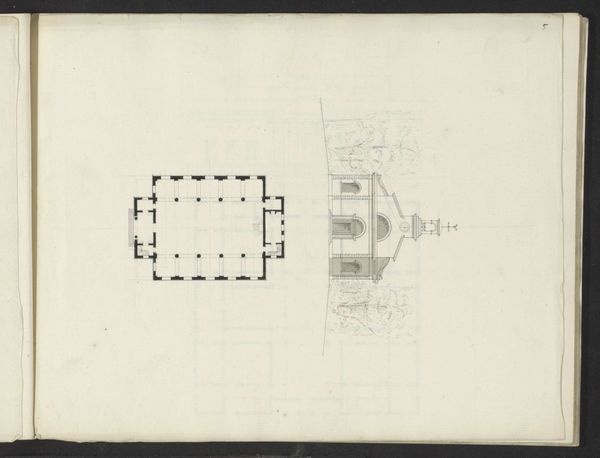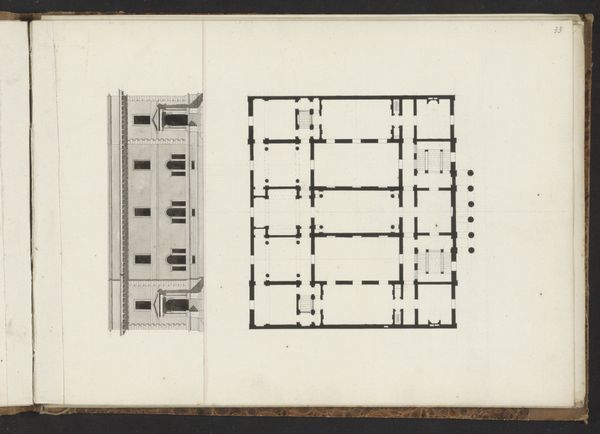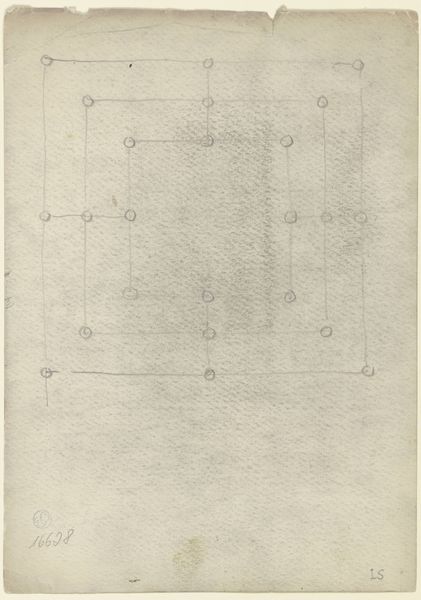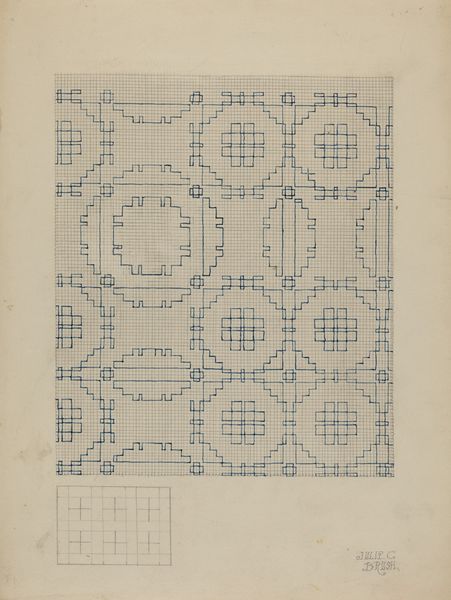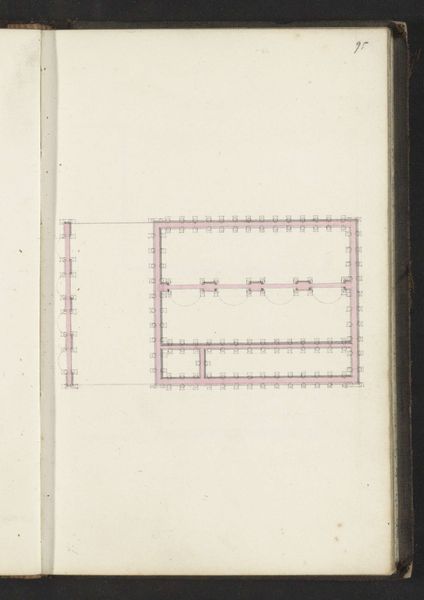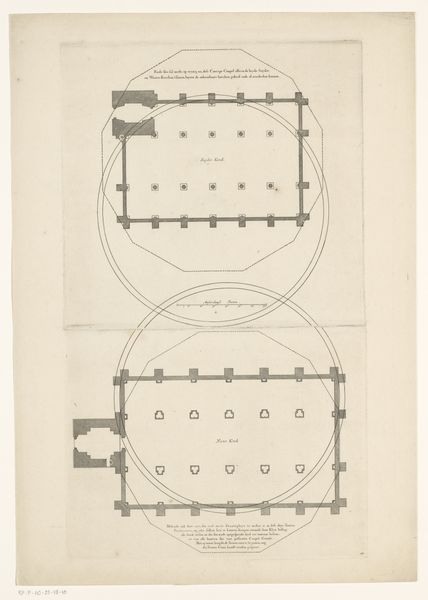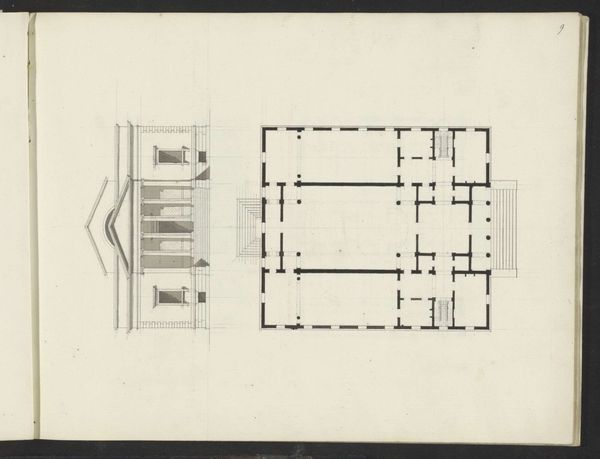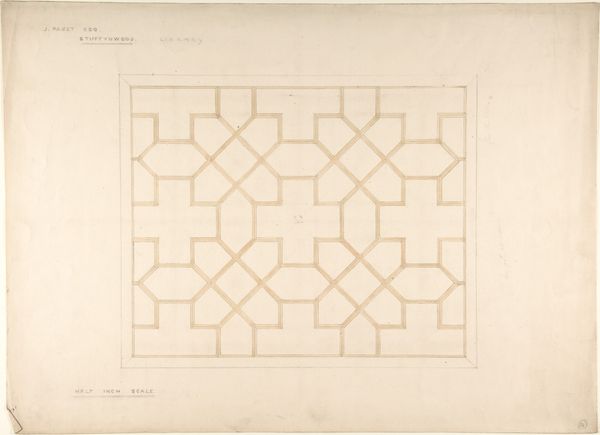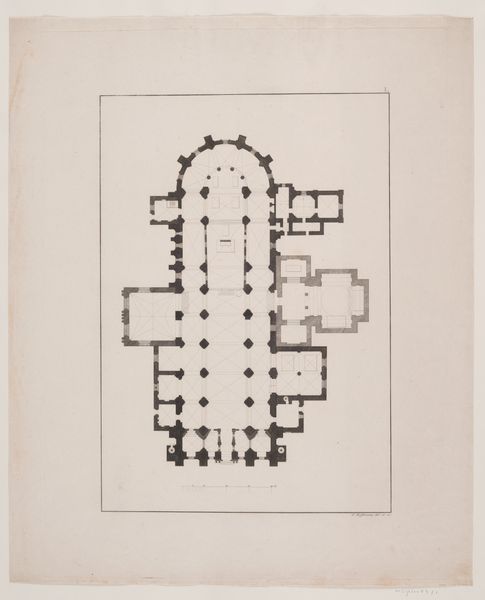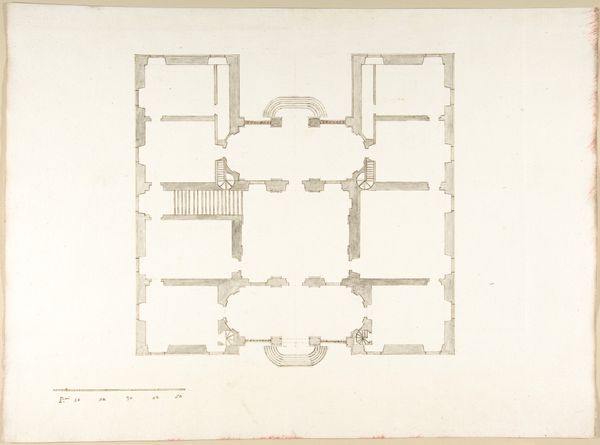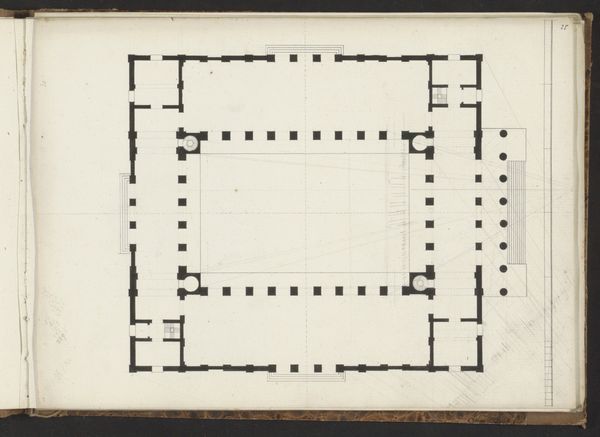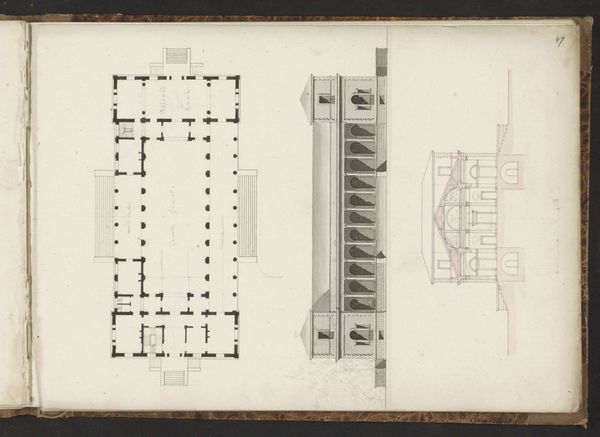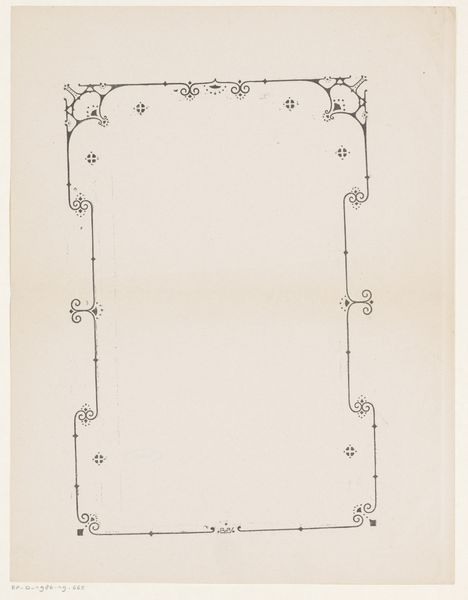
drawing, paper, ink, architecture
#
drawing
#
paper
#
ink
#
geometric
#
cityscape
#
academic-art
#
architecture
Copyright: Rijks Museum: Open Domain
Curator: Today we’re looking at "Plattegrond," a drawing attributed to Willem Springer Jr., dating roughly from 1825 to 1907. Editor: My first impression is the stark symmetry; it's almost unsettling in its precision. It looks more like an abstract geometric exercise than a building. Curator: That's interesting, because these kinds of architectural drawings reveal so much about the aspirations of the era. They tell us about the values placed on order, planning, and social structures that shaped our environment. This almost looks like an ideal building for public service. Editor: And it is rigorously planned using paper and ink as media. It reduces architecture to its base components – line, angle, plane. What does this kind of flattening do? What does this remove from how architecture should be thought about? It focuses on utility and construction while minimizing surface ornament or material qualities. Curator: Precisely. We need to think of this as an artistic production but as a document created within the cultural sphere, intended for practical application. Who gets to plan the structure and who gets to occupy it? That division of labor should not be taken for granted here. The work itself represents that very power relationship! Editor: Good point. Seeing how simply and economically he represents stairs, or window wells, or room partitions suggests there might be multiple ways this floorplan could be implemented given diverse materials at different times and places. How much are social relations built right into this basic frame? Curator: Without careful execution with the available materials the architectural plans could just be useless marks on the page. The building must reflect the socio-economic reality and that labor process of material implementation of that blueprint! Editor: Seeing this, I am realizing it can be useful and lovely simultaneously. Curator: A testament to when architecture intersects with design.
Comments
No comments
Be the first to comment and join the conversation on the ultimate creative platform.
